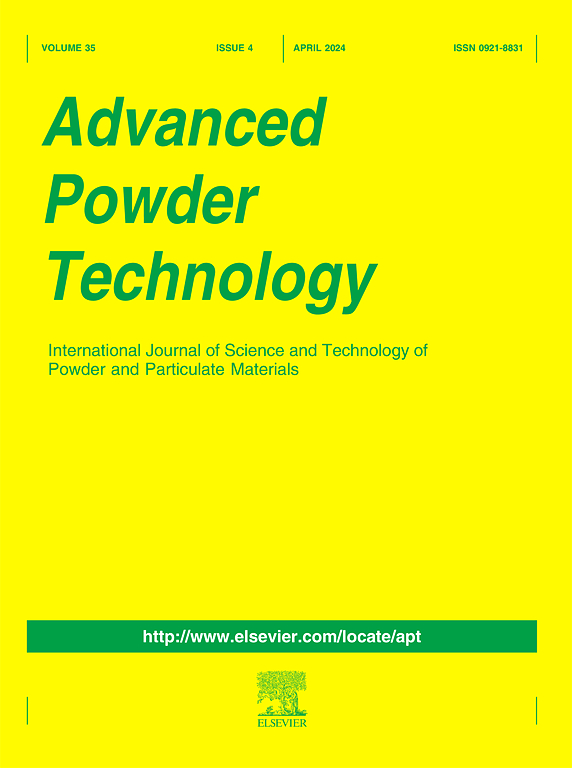模拟粘性粉末松散堆积的粗粒度DEM验证
IF 4.2
2区 工程技术
Q2 ENGINEERING, CHEMICAL
引用次数: 0
摘要
离散元法(DEM)的粗粒模型由于具有大幅降低计算成本的潜力而引起了人们的广泛关注。然而,他们在模拟松散堆积行为的适用性细和粘性粉末仍未探索。本研究的目的是验证缩放颗粒(SUP)模型,这是作者在之前的工作中提出的一种新的粗粒模型,用于模拟原始粘性粉末的松散堆积行为。采用两种不同的粒子插入方法来控制自由落体过程中的粒子簇结构:随机产生具有初始垂直速度波动的单个粒子和直接插入预先形成的粒子簇。结果表明,最终的填料结构受到落簇构型的强烈影响,SUP模型可以重现在原始立方颗粒中测试的广泛的填料分数,从高粘性颗粒的0.1到完全无粘性颗粒的0.8。这突出了考虑粒子集体状态来理解散装粉末行为的重要性。本文章由计算机程序翻译,如有差异,请以英文原文为准。

Validation of coarse grained DEM for simulating loose packing of cohesive powders
Coarse grain models for Discrete Element Method (DEM) have been attracting significant attention due to their potential to drastically reduce computational costs. However, their applicability in simulating loose packing behaviour of fine and cohesive powders remains unexplored. The purpose of this study is to validate the Scaled-Up Particle (SUP) model, which is a novel coarse grain model proposed in the authors’ previous work, for simulating loose packing behaviour of original cohesive powders. Two distinct particle insertion methods are employed to control the cluster configurations during free fall: random generation of individual particles with initial vertical velocity fluctuations and direct insertion of pre-formed particle clusters. The results show that the final packing structure are strongly influenced by the falling cluster configurations and the SUP model can reproduce a wide range of packing fractions tested in the original cubic particles, from 0.1 for highly cohesive particles to 0.8 for completely cohesionless particles. This highlights the importance of considering collective states of particles to understand bulk powder behaviour.
求助全文
通过发布文献求助,成功后即可免费获取论文全文。
去求助
来源期刊

Advanced Powder Technology
工程技术-工程:化工
CiteScore
9.50
自引率
7.70%
发文量
424
审稿时长
55 days
期刊介绍:
The aim of Advanced Powder Technology is to meet the demand for an international journal that integrates all aspects of science and technology research on powder and particulate materials. The journal fulfills this purpose by publishing original research papers, rapid communications, reviews, and translated articles by prominent researchers worldwide.
The editorial work of Advanced Powder Technology, which was founded as the International Journal of the Society of Powder Technology, Japan, is now shared by distinguished board members, who operate in a unique framework designed to respond to the increasing global demand for articles on not only powder and particles, but also on various materials produced from them.
Advanced Powder Technology covers various areas, but a discussion of powder and particles is required in articles. Topics include: Production of powder and particulate materials in gases and liquids(nanoparticles, fine ceramics, pharmaceuticals, novel functional materials, etc.); Aerosol and colloidal processing; Powder and particle characterization; Dynamics and phenomena; Calculation and simulation (CFD, DEM, Monte Carlo method, population balance, etc.); Measurement and control of powder processes; Particle modification; Comminution; Powder handling and operations (storage, transport, granulation, separation, fluidization, etc.)
 求助内容:
求助内容: 应助结果提醒方式:
应助结果提醒方式:


